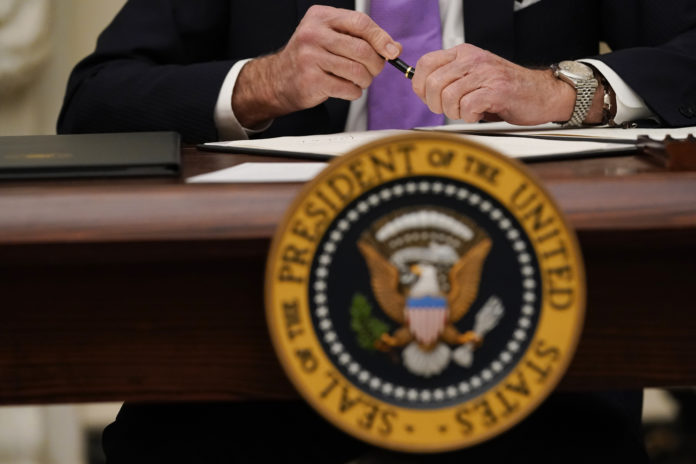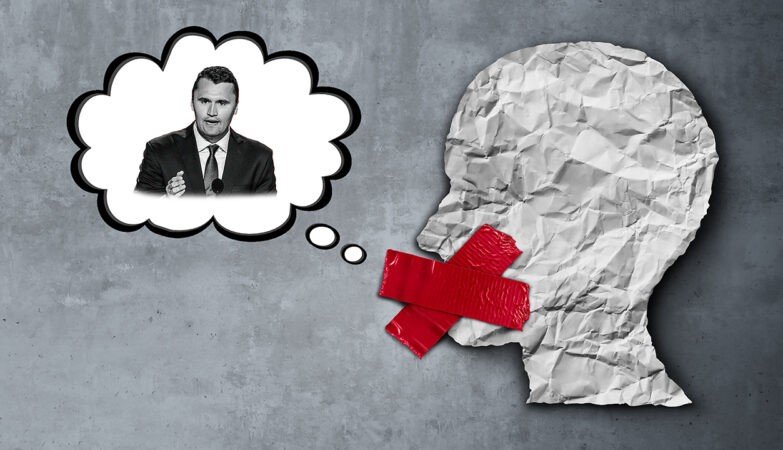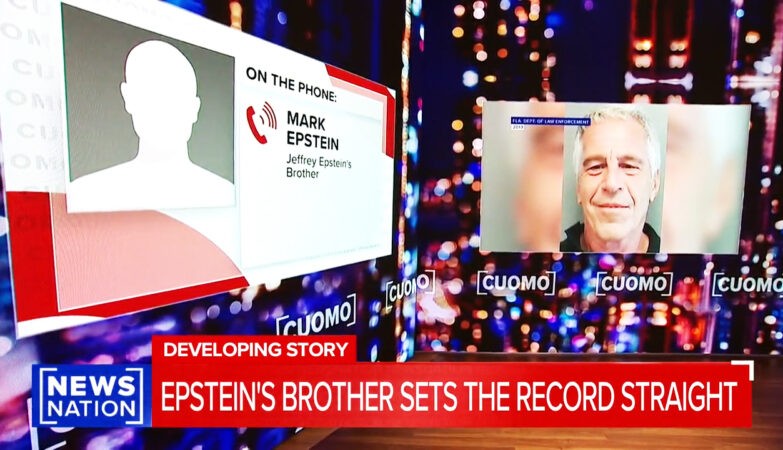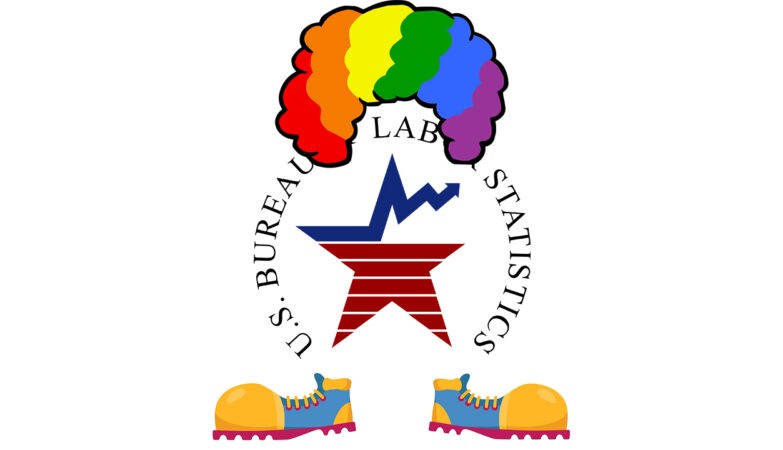Democrats now have single-party control of the federal government. President Joe Biden styled himself as the most “moderate” candidate his party had to offer. And still, during the campaign he promised to put Beto O’Rourke – the man who blurted out “Hell yes, we’re going to take your AR-15s” in charge of his administration’s gun policies.
Whether or not President Biden and gun czar Beto aimed for a program of national gun confiscation, we expected some sort of major crackdown against the Second Amendment and against our other liberties. It’s here. The congressmen who ducked, covered, and cowered – in now iconic photos – when protestors entered Capitol Hill will almost certainly draw the wrong conclusions. They will not – like Congresswoman Lauren Boebert – realize that their safety is fundamentally in their own hands and therefore carry arms and fight for the right of all Americans to do so.
No, they will act based on an intensified fear and perhaps even loathing of their fellow citizens after seeing what some of them proved capable of. The left will attack the First and Second Amendment at the same time, arguing that the free flow of information is dangerous in a country where citizens are armed and can take up action against perceived tyranny.
We’ve already seen what private tech companies are willing to do to curtail First Amendment freedoms, and we’ll soon find out what Democrats on Capitol Hill want to do to eviscerate the Second Amendment.
The Biden campaign promised to “hold gun manufacturers accountable.” Certainly, car manufacturers are – and should be – accountable when a defect that they knew about gets people killed. But we don’t hold Toyota accountable when someone drives drunk and kills a pedestrian. If we did, then Toyota wouldn’t exist.
Out of the myriad options a Biden administration will have to infringe on our constitutional protections, which will they choose first? Based on the The Federalist’s Ryan Cleckner’s experience with clients and the Bureau of Alcohol, Tobacco, Firearms and Explosives (AFT) as a firearms attorney, some recent news events, and a bit of firearm-industry intuition, It seems the first things the Biden administration is focusing on regarding guns are:
- Banning pistol braces
- Banning homemade firearms/80 percent receivers
- Banning online firearm and ammunition sales
Shortly after the first bans, and if he has the help of the Senate, the next gun control measures will likely be:
- Banning “assault weapons”
- Banning “high capacity” magazines
- Requiring universal background checks
Let’s examine each of these in turn.
1. Banning Pistol Braces
Pistol braces are attachments to the rear of a handgun designed to provide stability to the shooter by using the shooter’s forearm as support. Currently, adding a pistol brace to a handgun does not change the firearm’s legal status as a handgun. This is why pistol braces are so popular.
If a buttstock (a device designed to allow the firearm to be fired from the shooter’s shoulder) were added to the same firearm instead of a pistol brace, then the firearm would change classification to a rifle and significant legal implications could occur. Under federal law, a rifle must have a barrel length of at least 16 inches to avoid classification as a “short-barreled rifle” and be subject to extra restrictions, registration, and taxes.
As most of these pistols with pistol braces have barrels shorter than 16 inches, their status as a non-rifle is legally significant. If Biden is able to ban pistol braces, millions of otherwise law-abiding gun owners would become criminals overnight.
The ATF has already signaled that banning pistol braces is their number-one priority. This is one more odd move by the ATF, which originally certified the devices as non-buttstocks, then determined they couldn’t be shouldered, rescinding their opinion, and now wants to ban them outright. In fact, their legal gymnastics are so difficult to follow and unfair, Rep. Matt Gaetz has been unsuccessfully looking for answers on ATF’s overreach.
2. Banning Homemade Firearms
Under federal law it is perfectly legal for anyone who is legally allowed to possess a firearm to make his own gun at home for personal use. In the past few years, companies have offered components to make it even easier to make your own firearm at home.
These frames or receivers, often called “80 percent receivers,” have not yet crossed the legal line into becoming a firearm. In most cases, the ATF has specifically made a determination that the object is not “readily convertible” into a firearm and is therefore a non-gun.
Anti-gunners have long been against these homemade firearms and 80 percent frames/receivers, which they call “ghost guns” for their lack of traceability, and a few states have already banned them. We knew this would be a priority for a Biden administration but the ATF, just this week, raided the largest “80 percent” manufacturer, accusing them of unlawfully making and selling firearms despite giving permission to that company a few years ago.
3. Banning Online Firearm and Ammunition Sales
Firearms and ammunition can be legally purchased online. This upsets anti-gunners.
A firearm, once purchased online, must follow the same rules as any other firearm transaction. A firearm may not be purchased from a gun dealer online and shipped straight to someone’s home. It must be shipped to a local gun dealer, where the customer must appear to fill out paperwork and satisfy background check requirements.
Ammunition, on the other hand, may be purchased online and shipped straight to someone’s home under federal law (some states restrict this).
Biden proposes to end all online firearm and ammunition sales, which would require customers to forgo the benefits of e-commerce they enjoy for almost every other product in their lives, such as competitive pricing and product availability.
4. Banning ‘Assault Weapons’
The anti-gun movement learned a few lessons from their previous federal “assault weapons” ban. First, their previous ban had a sunset provision that allowed the ban to expire in 2004. Second, the ban focused on cosmetic features of firearms.
Biden has explained in his gun-control proposal that a new ban will be tougher and not allow firearm manufacturers to circumvent it with “minor changes that don’t change a weapon’s lethality.” With that standard, we can only assume that he intends to permanently ban all semi-automatic rifles.
Currently, his proposal includes plans to either “buy back” currently owned “assault rifles” or require their registration under the National Firearms Act (NFA) with the payment of a $200 tax each.
5. Banning ‘High-Capacity’ Magazines
The Biden administration wants to ban detachable magazines that hold more than 10 rounds of ammunition. This effort will likely be easier for them than banning “assault weapons,” as they’ll try to argue that they aren’t effecting a gun ban at all.
As with “assault weapons,” these will be outright banned and there will be an option to surrender magazines for money or register each magazine as an NFA firearm and pay a $200 tax each.
6. Universal Background Checks
Currently, background check requirements apply to all firearm transactions conducted through a federally licensed firearm dealer. However, under federal law, private party transactions in the same state may occur without a background check as long as the seller has no reason to believe that the recipient is a person prohibited from possessing a firearm. For example, a friend may loan a firearm to another during a hunting trip.
Universal background checks place a government barrier around a fundamental right and will, in effect, create a national firearm registry in order for the government to enforce and verify current possession of a firearm.
Biden has already promised that he wants to take your guns and laid out plans to do so. With Democrats possibly poised to control all of Congress, expect them to follow through on these public promises.
Executive Orders
As of March 2021, President Joe Biden had already signed 37 executive orders. Recently, he confirmed that he’s looking at his options for executive orders to control firearms.
“Can we expect any gun control executive orders soon?” he was asked at a press conference on March 26.
“Well, we’re looking at that right now,” he responded. “We’re looking at what kind of authority I have relative to imported weapons, as well as whether or not I have any authority to—these new weapons that are being made by 3D equipment that aren’t registered as guns at all, there may be some latitude there as well.”
But it doesn’t stop there. He’s being pressured by lawmakers to take executive action—such as reclassifying the Ruger AR-556 pistol as a rifle—and fast. White House Press Secretary Jen Psaki told reporters that executive orders were in the President’s playbook.
“When the President was the Vice President in the Obama-Biden administration, he helped put in place 23 executive actions to combat gun violence,” Psaki said at one of the daily press conferences. “It’s one of the levers that we can use—that any federal government, any President can use to help address the prevalence of gun violence and address community safety around the country.”
With 37 executive orders already on the books, will he sign one on gun control? If so, how might a potential executive order affect you, the law-abiding gun owner?
The Authority of the President
The President of the United States of America has the ability to issue executive orders. In fact, executive orders can be traced all the way back to this country’s first President, George Washington. An executive order is a means of issuing federal directives by the President to manage the operations of the federal government. The legal or constitutional basis for executive orders has multiple sources.
The authority of the President to issue an executive order is not expressly stated in the United States Constitution, but rather implied. This implied power comes from Article II, Section 1, which states: “The executive power shall be vested in a President of the United States of America.” Furthermore, Section 3 of Article II states that the President “shall take Care that the Laws be faithfully executed.”
In some cases, the President has statutory authority to issue executive orders, as codified in Title 3 of the Code of Federal Regulations with the force of law. Although the President does not need Congressional approval to issue an executive order, Congress can revoke an executive order by enacting new laws subject to the President’s veto power or withholding federal funding. Executive orders are not, however, without limitations and are subject to legal review by the federal courts and the U.S. Supreme Court.
The Extraordinary Power of Presidential Orders
Although executive orders are directives to the government and federal agencies—rather than individuals—many historic examples demonstrate the impact on individual rights. If an agency is forced to change a policy because of an executive order, then that policy can directly affect the average American.
In the many years since our founding as a country, there have been some noteworthy executive orders issued by Presidents that greatly affected people; some severely limited their rights under the Constitution and seem outright antithetical to our American ideals today. Here are some noteworthy examples:
- President Harry Truman: Faced with a massive strike by the steel industry during the Korean War, President Truman signed Executive Order 10340 on April 8, 1952. This order allowed the Secretary of Commerce to take possession of certain American steel mills and ordered all federal agencies to assist as necessary in the plant and facility seizures. This was quickly ruled by the Supreme Court to be unconstitutional.
- President Woodrow Wilson: Demonstrating that executive orders can impact specific aspects of life—even hunting—through Executive Order 1884, President Wilson made hunting with the use of a “lantern, torch, bonfire, or other artificial light” a misdemeanor offense. Furthermore, Wilson signed many other executive orders covering hiring, anti-corruption efforts, telegraph and wireless services, and postal crimes, and he even got involved in the day-to-day operations of the Panama Canal Zone… all by executive order.
- President Abraham Lincoln: President Lincoln took a drastic and controversial step to sign an executive order that suspended habeas corpus and the right of the accused to report unlawful detention. This was done to stop a Southern-sympathizing legislator from blocking the movement of Union troops to Washington, which was virtually undefended at the start of the Civil War. While the initial order only allowed for warrantless arrest between Philadelphia and Washington, D.C., President Lincoln also suspended habeas corpus and imposed martial law in Kentucky on July 5, 1864.
- President Franklin Delano Roosevelt: Through Executive Order 9066, President Roosevelt authorized the detention of more than 110,000 Japanese Americans. Taken mostly from the West Coast, approximately 60% of those interned were American citizens who were denied the right of habeas corpus and placed in detention facilities because of their Japanese ancestry.
Gold, Guns, and Presidential Orders
Another noteworthy FDR action occurred on April 5, 1933, when President Roosevelt signed Executive Order 6102, requiring Americans to surrender their gold (other than gold jewelry, gold coins, and a very small amount of gold bullion) to the government for payment of the then prevailing value of the gold surrendered.
If you could be forced to surrender gold by executive order, is it a stretch to think that guns could be handled the same way?
To date, a mandatory buyback has never been attempted. One failed 2020 presidential candidate memorably proclaimed during a debate in Houston, “Hell yes, we are going to take your AR-15, your AK-47.” Could this candidate have been thinking of a possible executive order?

Beyond executive orders, the President has other executive powers such as issuing a proclamation and/or memorandum. A recent example of this is the banning of bump stocks. In 2018, President Donald Trump used his executive power, through memorandum, to require the Bureau of Alcohol, Tobacco, Firearms and Explosives (ATF) to ban bump stocks by changing their regulations.
Of course, President Trump is not the first to use his executive power to restrict firearms. After the Sandy Hook Elementary School shooting in 2012, President Barack Obama issued several executive actions involving gun control. These actions included:
- Directing federal agencies to share background check information with one another.
- Giving money to the states for sharing background check information.
- Reviewing the criteria of who should be prohibited from purchasing, possessing, or transferring firearms and ammunition.
- Launching a “safe and responsible” gun ownership campaign.
- Requiring federal law enforcement to trace guns recovered in criminal investigations.
- Clarifying that doctors, under the Affordable Care Act, may ask their patients about guns in their homes.
In Conclusion
Executive orders are a powerful tool of government that can easily change depending on the particular Commander-in-Chief and their desired policies. What will Biden do with his power?
With over half of Americans polled voicing their disapproval on how President Biden is handling gun laws, your guess is as good as ours. But given his recent comments and actions, law-abiding gun owners should brace themselves for executive orders or more importantly, actual legislation that is going to severely impact their lives.
- https://thefederalist.com/2020/12/16/6-first-gun-control-measures-to-expect-from-a-biden-administration/
- https://townhall.com/columnists/andrewpollack/2021/01/10/get-ready-for-the-biden-gun-grab-n2582867
- https://www.thetruthaboutguns.com/can-a-biden-presidential-executive-order-take-away-your-guns/
- The New Right vs. the New Left - December 10, 2025
- Why the 11th Amendment Needs to Be Revoked - December 9, 2025
- When Will the AI Ponzi Scheme End? - December 8, 2025






















